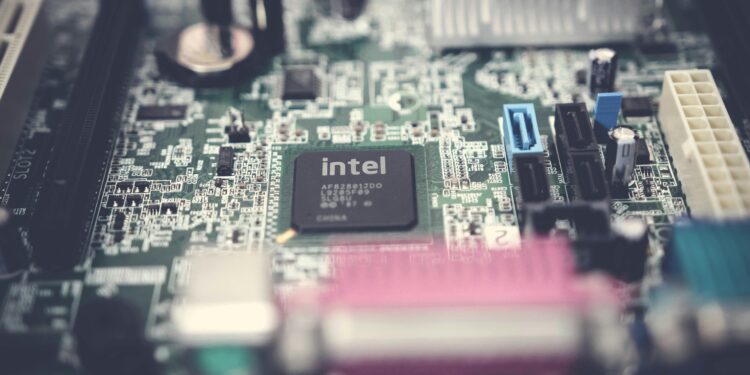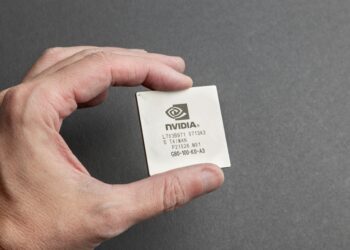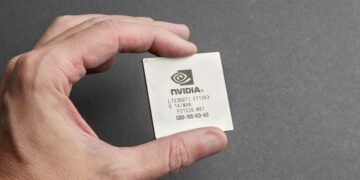Amidst Financial Woes and Strategic Uncertainty, Intel Explores Radical Changes
Intel Corp (INTC) once a titan of the semiconductor industry, is now grappling with the most challenging period in its 56-year history. The company, headquartered in Santa Clara, California, is working closely with investment bankers to explore various strategies to stabilize its business. These options include a potential split of its product-design and manufacturing businesses, alongside potential cuts to its ambitious factory expansion projects.
The Struggle for Survival
Intel’s long-time financial advisors, Morgan Stanley and Goldman Sachs, are reportedly playing a pivotal role in these discussions. The urgency of these deliberations has intensified following Intel’s dismal earnings report earlier this month, which saw the company’s stock plummet to its lowest level in over a decade. The company’s shares have declined by 60% this year, significantly underperforming the broader chip industry, represented by the Philadelphia Semiconductor Index, which has seen a 20% gain.
No major decisions are imminent, and the discussions remain in their early stages. However, the various scenarios are expected to be presented at a board meeting scheduled for September. Intel’s management, led by CEO Pat Gelsinger, is under pressure to come up with a viable turnaround plan.
A Potential Shift in Strategy
One of the more drastic options on the table is the potential separation or sale of Intel’s foundry division. This division, aimed at manufacturing chips for external customers, was seen as a cornerstone of Gelsinger’s strategy to restore Intel’s standing among global chipmakers. The goal was to position Intel to compete with industry leader Taiwan Semiconductor Manufacturing Co. (TSMC).
However, given the company’s current financial challenges, it’s more likely that Intel will opt for less radical measures. These might include delaying some of its expansion plans, a move that would allow the company to conserve cash while reassessing its long-term strategy. Intel has already taken steps in this direction by securing project financing deals with Brookfield Infrastructure Partners and Apollo Global Management.
Gelsinger’s Uphill Battle
Gelsinger, who rejoined Intel in 2021 after a decade-long absence, faces an increasingly difficult task. His ambitious plan to expand Intel’s factory network has collided with a severe decline in sales, leading to a net loss of $1.61 billion in the last quarter. Analysts predict that the company will continue to report losses over the coming year, raising doubts about the viability of Gelsinger’s strategy.
“Expect big capex cuts from Intel over the next 12 months,” said Amir Anvarzadeh, a market strategist at Asymmetric Advisors. “Intel’s model is effectively broken. It’s fighting fires on too many fronts.”
In response to the deteriorating financial situation, Intel has already announced plans to cut approximately 15,000 jobs and significantly reduce capital spending. The company also made the painful decision to suspend its dividend, a move that underscores the severity of its financial woes.
“It’s been a difficult few weeks,” Gelsinger admitted at the Deutsche Bank Technology Conference. Despite efforts to outline a clear path forward during the recent earnings report, the market’s response was overwhelmingly negative. Adding to the turmoil, semiconductor industry veteran Lip-Bu Tan abruptly resigned from Intel’s board, removing a key source of industry expertise and further complicating Gelsinger’s efforts to navigate the company through this crisis.
The Future of Intel’s Foundry Business
A central element of Gelsinger’s comeback plan was to split Intel into two distinct groups: one focused on designing chips and the other on manufacturing them. The idea was that the manufacturing arm, freed from the constraints of in-house demand, could attract business from other companies.
However, the foundry business remains heavily reliant on Intel’s own chip designs, limiting its financial viability. The division reported operating losses of $2.8 billion in the most recent quarter, and the outlook for the remainder of the year is grim.
With a market value of $86 billion, Intel has fallen out of the top 10 largest chipmakers globally and is now the second-worst performer on the Philadelphia Semiconductor Index. This sharp decline in market value stands in stark contrast to the meteoric rise of Nvidia Corp., a rival company that is expected to generate double Intel’s revenue in 2024.
As Intel’s board prepares to consider its options, the company’s future hangs in the balance. The decisions made in the coming months could determine whether Intel can reclaim its position as a leader in the semiconductor industry or continue its downward spiral.
You might like this article:Eos Energy Enterprises Secures $30 Million Milestone, Paving the Way for Growth in Long-Duration Energy Storage











